Issue #59
Commentary
What are the passions in your life? What drives you to do what others are not willing to do? Our youth is spent seeking our passion, and for some, that takes years. Some people will find their passion early and spend a lifetime in pursuit of that passion. Others will wander for years, exploring, seeking, and dreaming before they discover that passion.
Do you pick the topics you write about, or do the topics pick you? Do you choose what you paint, or do the subjects you paint choose you? Do you choose where to focus your creative energy?
At some level, the subjects, topics, or themes we write about, photograph, or paint are given to us. We may think that we choose our subjects, but when we analyze them deeply, we often find that they are born in our biology, environment, family history, and soul. We never really know why we have chosen a specific topic or theme. We don't know why one person is passionate about soccer, and another could care less. Or why one person writes about animals in the wild and another paints portraits of wealthy people.
I spent forty years working in health care for the elderly. This is not something I ever dreamed of doing. When I graduated from college, I had no plans to work in nursing homes. Four years after I graduated, I applied for a job as a speechwriter and heard nothing. Three months later, I received a phone call from a nursing home company looking for a policy and procedure manual writer. I interviewed and was hired. I expected to be there for a few years and then move on. I learned to love the business. Sometimes, our passions find us.
For our lives to make sense, we must see and understand the patterns and the themes. What subjects do you keep coming back to even though you try to escape? One of the dominant themes in my life is spirituality. No matter how often and how much I try to escape, I keep returning to it. It drives my writing, my painting, and my life. My writing has been a search for the unknowable — the ultimate questions about why we are here.
Dorothea Lange
Born in 1895 in Hoboken, New Jersey, a second-generation German immigrant.
Contracted polio when she was seven, and it left her with a permanent limp.
Her father abandoned the family when she was twelve.
Studied photography in New York.
Moved to northern California at the age of 23.
Married Maynard Dixon, painter, in 1920 and had two sons. They divorced in 1935.
Married Paul Talyor, a professor of Economics.
Became famous for her photos of the Great Depression.
Her most famous photo is Migrant Mother, a photo of Florence Owens Thompson.
Documented the forced evacuation of Japanese Americans to relocation camps during World War II.
Taught photography at the California School of Fine Arts.
Co-founded Aperture, a photographic magazine.
Died in 1965.
"I saw and approached the hungry and desperate mother, as if drawn by a magnet....I did not ask her name or her history....She had just sold the tires from her car to buy food."
Sometimes, our subject matter chooses us. The events of the times we live in impact and change our creative output. The subjects we choose to paint or write about are found in the world around us. Those who have experienced war as a civilian or soldier will bring that experience to their paintings and writings. Those who experience the violent wrath of Mother Nature will be drawn to paint those images. How much has your creative work been influenced by the times in which you live?
My writing has been influenced by living through the turbulent 1960s, from the protest marches to the hippies. I experienced the Death of God movement and the rise of Black Power. I lived through the decade that saw the assassinations of John, Bobby, and Martin. To some extent, I am a child of the times, and that is reflected in my art and who I have become as a person.
What external forces have shaped and given your creative work focus and meaning? For some, the first decade of the 21st century will define their art and who they become. For some, global warming and extreme weather conditions will define their art. To some extent, we are all products of our time.
Dust Bowl by Alexandre Hogue. Smithsonian American Art Museum, Gift of International Business Machines Corporation.
Alexandre Hogue
Born in 1898 in Memphis, Missouri.
Raised in Texas and graduated from a high school in Dallas.
Attended Minneapolis College of Art and Design.
Employed at the Dallas Morning News as an illustrator.
Moved to New York in 1921 and worked for various advertising firms.
In 1931, began teaching art classes at the Texas State College for Women.
In 1938, married Maggie Jo Watson.
From 1945 to 1963, he was the head of the art department at the University of Tulsa.
Died in 1994.
Plant seeds of hope in the hearts of others!
Thank you for reading.

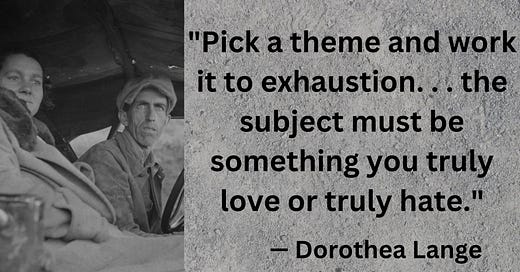



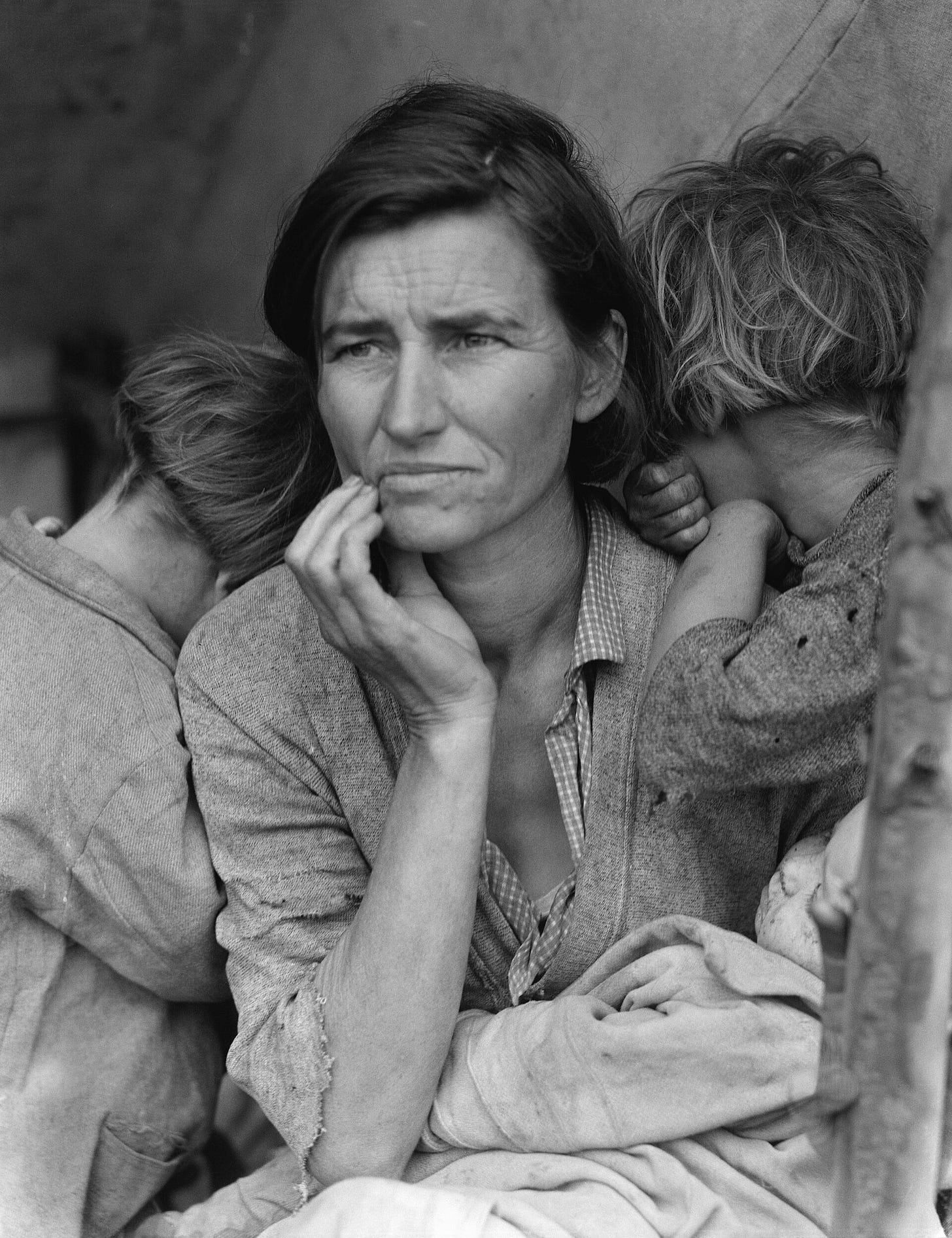

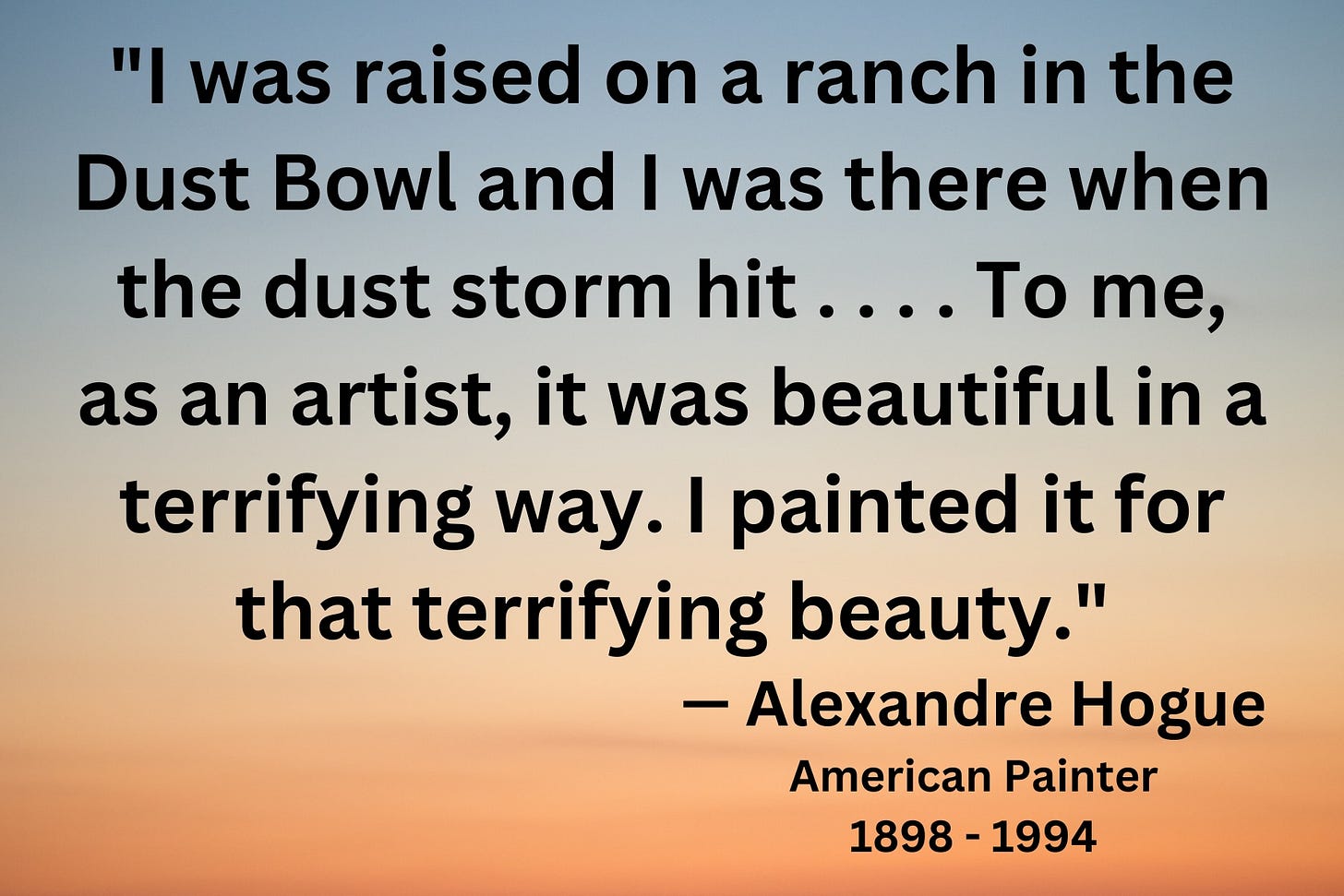
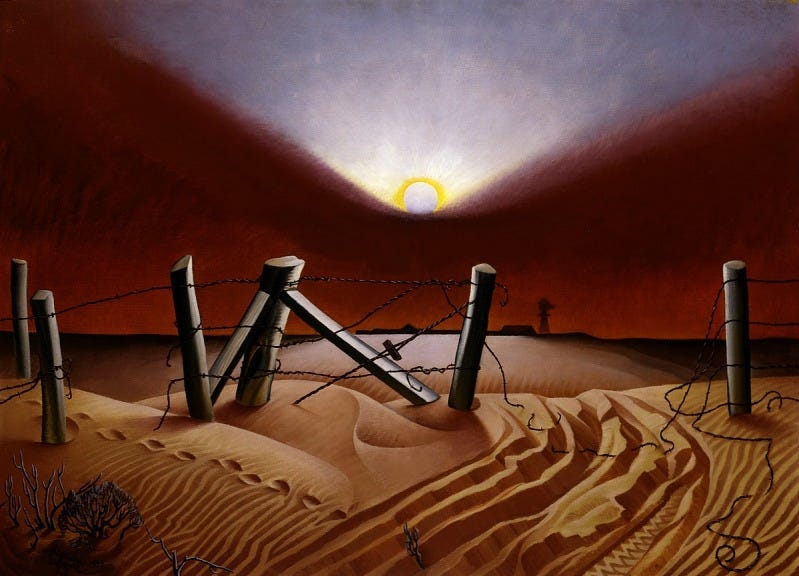
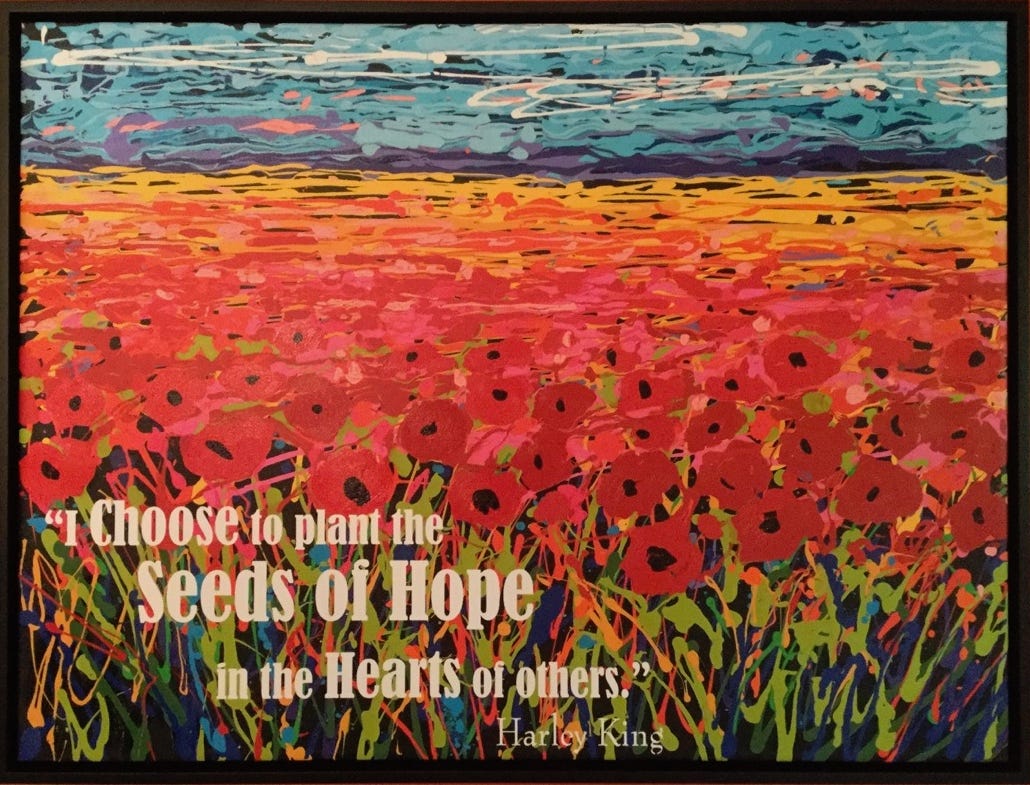
This is a very thought-provoking piece. Do we choose our passions or do they choose us? Or did we choose them before incarnating causing it to appear that they chose us?
I have had several passions in this lifetime and when Iook at them all I can see some sort of central theme connecting them all - tying them together but it is very hard, right now, to say what that central theme is.
But it is related to science and to spirituality, especially as they relate to health and wellbeing.
Maybe that is why we connect, Harley. Maybe we should talk about this connection some more.